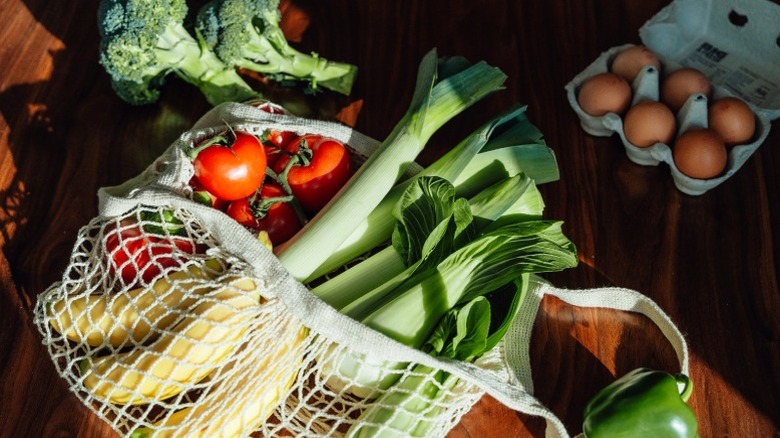Smart Grocery Buys For Your First College Semester And What To Skip
If it's your first time living in a college dorm or somewhere else without any kitchen equipment whatsoever, you're going to have to get smart with grocery shopping. You're not going to have the money from a full-time working income, and grocery prices have increased over the last few years with chances of things only getting more expensive in the future. Three investments worth making upfront are an air-fryer or microwave, an electric kettle, and a mini-fridge with a freezer (coordinate with roommates so you're not doubling up). You'll want to prepare a makeshift kitchen setup, as most cafeterias close early in the night and most restaurants and grocery stores follow suit, leaving you with limited late-night food options beyond Waffle House.
As a busy student, your body needs nutrients to thrive, aka fruits and vegetables. However, fresh produce spoils quickly, so it's best to opt for options that come frozen, dehydrated, or canned. Trader Joe's has affordable fruit medley bags in the freezer section, and frozen grapes, mangoes, and strawberries are refreshing snacks with natural sugar.
Canned produce has a long shelf life, and canned corn, tomatoes, tomato sauce, potatoes, and pre-cooked mushrooms have a lot of versatility. They're often just as cheap, if not cheaper, than buying fresh — Walmart even sells this stuff for under a dollar. Frozen and canned vegetables still have nutritional value, and you don't have to worry as much about spoilage.
Get your money's worth with low-effort, nutritious food
It's important for college students to eat enough protein to accommodate walking around campus with bulky backpacks. A big bag of frozen chicken breasts or tenderloins can do well in the air fryer, and you can also air-fry chicken wings from frozen. Barbecue sauce, lemon pepper seasoning, or buffalo sauce go a long way in bringing these cuts to life. Chickpeas, broccoli, lentils, tofu, and kidney beans are protein-rich meat alternatives that can come canned, too. Red meat is usually more expensive, and it takes a bit more finesse to perfect in the dorm unless you're getting it prepared as deli-sliced lunch meat or jerky.
Bread spoils quickly, and students sometimes don't end up using the whole loaf by the time it expires. Tortillas, rice paper, and seaweed last longer, and they can make all sorts of wrapped meals with some minute rice and toppings of your choice. Cereal and instant oatmeal are solid breakfast options, and plant-based beverages can have greater longevity than cow's milk.
Dried pasta is a more convenient source of carbohydrates than bread, too. Instant ramen noodles are handy in a pinch, but they're packed with sodium and aren't always filling. Instead, you could be getting delicious Japanese flavors from soba noodles, which are made from buckwheat. Soba has benefits like fiber and protein, and is often gluten-free as well. Wheat and legume-based pastas are a little more expensive than 99-cent spaghetti, but they can often be more nutritious and filling, making them worth the cost. Dorm living doesn't have to mean settling for less.

